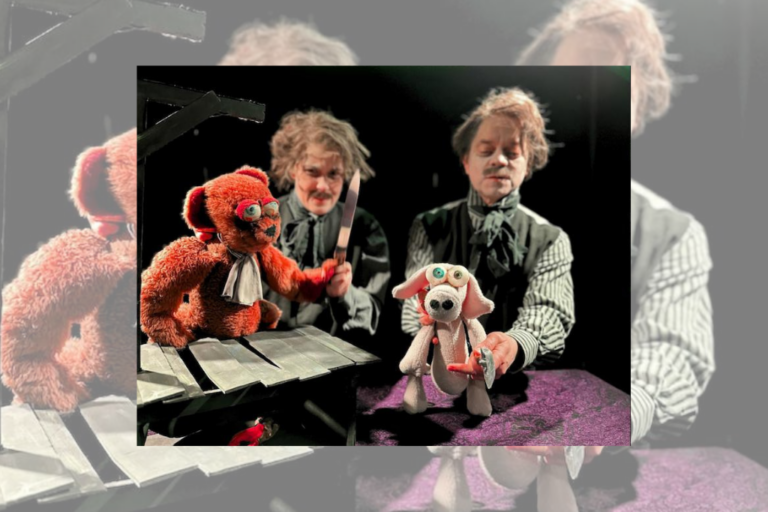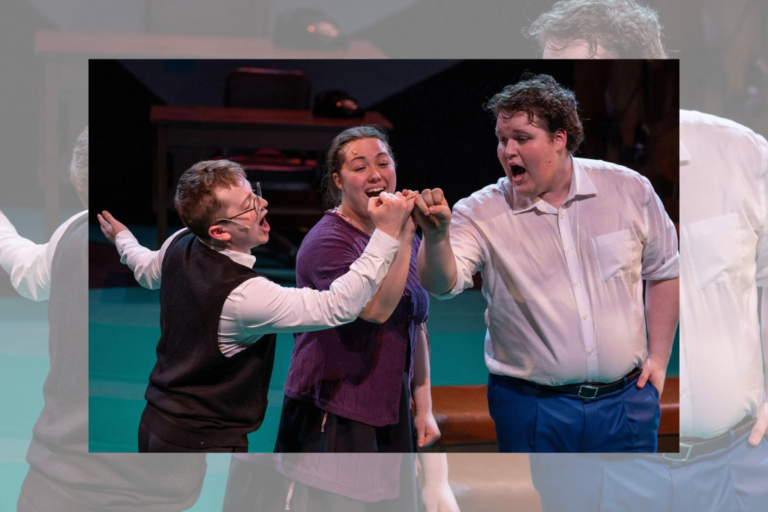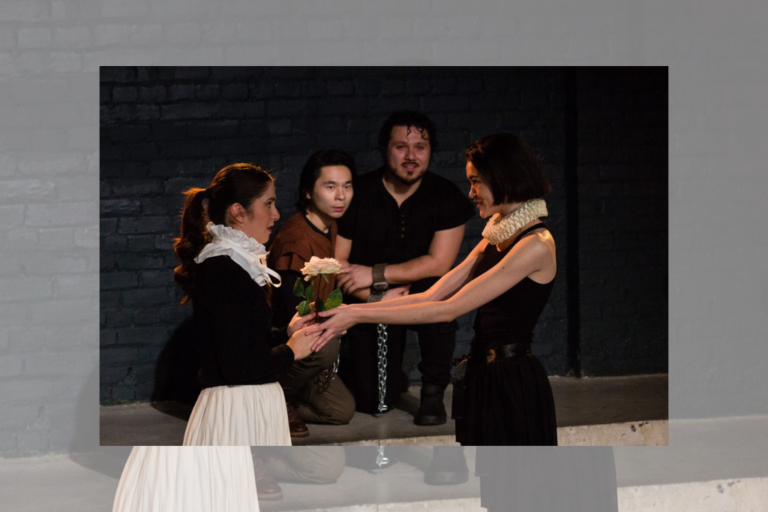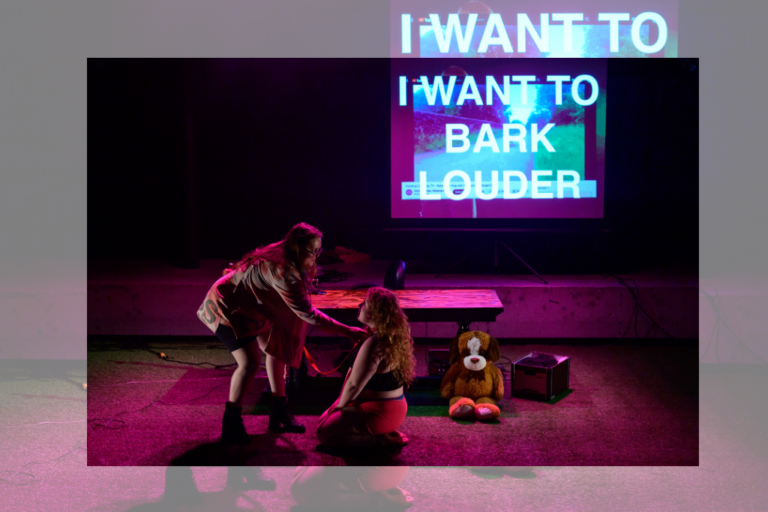Shaw Festival reviews: My Fair Lady and Witness for the Prosecution sing
A witness for the prosecution meets the fitness of the elocution?
One wouldn’t think there’d be a lot of common ground between the Shaw Festival’s productions of Agatha Christie’s Witness For The Prosecution and Lerner and Loewe’s My Fair Lady. The former is a twisty courtroom drama, where we wonder whether a nice young man has really “done in” his wealthy older female friend at the promise of inheriting her estate.
The other is a charming musical based on Shaw’s Pygmalion, concerning a plucky flower girl raised from her standing by a cranky master of articulation and accent, who teaches her courtly mannerisms and enunciation in a bet that he can pass her off as to the manor born. At first glance, both classics also look a little musty through the politics of today in their treatment of gender and social mores.
But, aha! — in Shaw, there’s always another argument, and in Christie, there’s always another twist.
Through the Shaw Festival’s elegant, sharp handling, both works manage to feel fresh and germane to a 2024 audience. When the gavel comes down, we see two shows that comment on preconceived notions of class, gender, and place of origin that form barriers to truth and equality. The medium of performance and the plot of both plays ask us to consider the performative nature of public appearance, where societal perception means everything for one’s future, but doesn’t have much to do with what happens behind closed doors.
Witness For the Prosecution is Christie with a serving of camp and self-awareness. With two intermissions and at around three hours, it’s a long haul, but moves at a quick and steady pace. It’s a courtroom drama through and through, our very own Law and Order: Niagara-on-the-Lake. Based on the mystery writer’s 1925 short story of the same name, it’s not so much a “whodunnit” as a “did he do it?”
When mild-mannered Leonard Vole (Andrew Lawrie) enters the law offices of Sir Wilfrid Robarts, QC (Patrick Galligan), he quickly becomes acutely aware that he’s the only solid suspect in the murder case of his older lady friend (the production delights in describing the 56-year-old woman as “elderly” and decrepit, which provoked murmurs of irritated dissent from the largely senior audience).
Voles are related to hamsters and lemmings, and Lawrie exudes the geniality of the former and the doomed nature of the latter, seeming an affable gent who’s simply over his head in a wave of circumstantial evidence. Drawing more suspicion are the motives of his wife Romaine (Marla McLean), a foreign actress who, depending on who opposing counsels Robarts and Myers (Graeme Somerville) talk to, may be deeply in love with him, in a political marriage of convenience that removed her from Germany after the war, or even directly plotting against him.
Director Alistair Newton raises the camp factor as McLean gets the femme fatale treatment, wearing Judith Bowden’s artful costumes and sculptural hats as the only pop of colour in Karyn McCallum’s otherwise deliberately dreary, grey-and-brown-toned law office and courtroom presided over by blind Lady Justice. McLean leans into the sultry role, swaying her hips but giving nothing away on her cold face. The bright outfits and brassy accompaniment to her entrances represent how she’s seen by the courtroom at large. During the trial, Robarts and Myers bait each other with sarcastic barbs, seeming more intent on defeating each other than finding truth. The only thing they can apparently agree on is that women can’t be trusted, and foreign women doubly so.
In the courtroom, Monica Parks as Janet MacKenzie, the murdered woman’s housekeeper, entertains with an affronted brogue, her ire directed at the man who usurped her role as confidant and heir. Shawn Wright’s judge also delivers a couple of delicious smackdowns when the questioning gets too heated.
Even with the strong pacing, legal one-liners, and willingness to poke fun at itself, the show’s messaging initially seems hard to take at face value in 2024 — but Christie has a couple of tricks up her sleeve that, while slightly credulity-straining, effectively make us question our perceptions of what came before. It’s not a deep show by any means, but might spark a conversation on the ride home about what we’re willing to believe about women who don’t behave to expectations.
In My Fair Lady, Tom Rooney’s Henry Higgins feels an extension of Christie’s questioning counsels when he exasperatedly sings, “Why can’t a woman be more like a man?” In the musical, the goal is not to pass questioning in a courtroom, but in a courtly ball. Linguist Higgins takes a bet from new friend Colonel Pickering (played with kind daffiness by David Alan Anderson) that he can turn around the prospects of Eliza Doolittle (Kristi Frank), Covent Garden flower girl, simply by molding her accent and manners into something from a higher class.
The social commentary about class mobility is sharp and deliberate here, Lerner’s justifiably famous lyrics dancing and sparkling with clever rhymes (such as the iconic “ruder pest/Budapest”). Even amidst the comic relief of Eliza’s father Alfred P. Doolittle (the expressive David Adams), a man measuring up to his name as a dissolute drunk, there’s a message about the golden handcuffs of a veneer of respectability. Bemoaning his inability to turn down the cash that lets him live high on the hogshead, Dolittle ruminates that when people are looking down their noses at you, the angle means that at least they don’t see most of what you’re doing.
Tim Carroll and Kimberley Rampersad’s production also plays up the sheer ridiculousness of upper-class life and Higgins’ musical misogyny, from the agonizingly slow head turn of the elite viewing the Ascot horse race, to Rooney clambering around Higgins’ two-story library set by Lorenzo Savoini while passionately insisting that he’d much rather spend time with the Colonel than any woman.
Savoini’s set also places the coal-stained London next to its gated communities. The library where Higgins mercilessly tests Eliza and the ballroom where she faces her biggest exam are bright, expansive, rich, and airy. The deep, shadowy hues of the projections in the poorer Covent Garden scenes, and the small, cozy wooden pub from which Alfred is regularly booted show a very different way of life.
Showing emotional distaste for his wealthy neighbours and intellectual distaste for his poorer ones, Rooney’s Higgins fits into neither world. Sneering, Rooney plays Higgins as a man constructing one massive social falsehood to show he has no time for social falsehoods; his complete inability to play along with any nicety he deems useless highlights the double standard for Eliza, who mustn’t put a toe out of place.
This Higgins feels closer to Shaw’s social commentator than musical theatre’s demiromantic hero; his interactions with Frank’s Eliza contain more argumentative fireworks than chemistry, and it’s easier to see them as equals who have mutual respect than as friends.
While Eliza becomes more and more sure of herself, Higgins seems more and more like a lost little boy. Sharry Flett as his mother winningly exploits his regression, especially adept at puncturing his pretensions while lending support to Eliza’s growing independence.
Costumes by Joyce Padua are lovely and full of personality, from the range of sculptural hats in that famous Ascot racing sequence that echo Romaine’s in Witness, to an attractive rainbow set of matching white and colour-coded gowns at the ball. Unfortunately, Mrs. Higgins gets the bright red accents, which look oddly bloody in comparison to some of her counterparts; perhaps it signifies her ability to absolutely eviscerate her son.
As a boys vs. girls show, the double act of Rooney and Anderson is fun to watch, and Mrs. Higgins is one of three strong portrayals of the women in Henry’s life, with housekeeper Mrs. Pearce (Patty Jamieson) a stoic picture of eye-rolling tolerance who doesn’t take her boss too seriously. In the leading role, Frank has a gorgeous voice and finds her feet and spine in the second act, shading her character to finally be a person who knows her own worth, more than just her cry of “I’m a good girl, I am!”
After all, as both of these slick and entertaining shows demonstrate, being a “good girl” is highly subjective — and not all it’s cracked up to be.
You can learn more about the Shaw Festival here.
Intermission reviews are independent and unrelated to Intermission’s partnered content. Learn more about Intermission’s partnership model here.















Comments